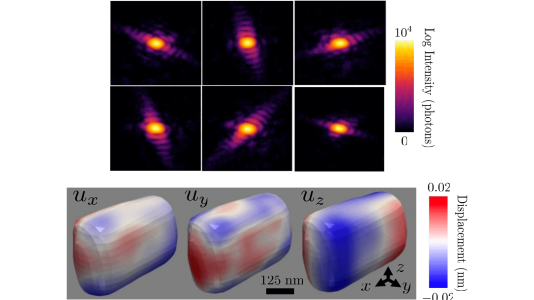
Scientific Achievement
Three-dimensional nanoscale imaging of vector-valued lattice displacement fields in crystals was demonstrated via an optimization-based inversion approach for multi-reflection Bragg coherent diffraction imaging (MR-BCDI).
Significance and Impact
This achievement will enable efficient imaging of lattice defects and heterogeneities that govern the behavior of nanoparticles, and it paves the way for in-situ studies at APS-U with high-throughput in-situ MR-BCDI.
Research Details
- A model of MR-BCDI diffraction was developed that accounts for the geometric factors of realistic measurements and that is amenable to inversion with global optimization.
- This MR-BCDI approach was used to visualize an internal lattice displacement vector field within a SiC nanoparticle fabricated by methods used to make quantum sensors.
Argonne National Laboratory seeks solutions to pressing national problems in science and technology. The nation’s first national laboratory, Argonne conducts leading-edge basic and applied scientific research in virtually every scientific discipline. Argonne researchers work closely with researchers from hundreds of companies, universities, and federal, state and municipal agencies to help them solve their specific problems, advance America’s scientific leadership and prepare the nation for a better future. With employees from more than 60 nations, Argonne is managed by UChicago Argonne, LLC for the U.S. Department of Energy’s Office of Science.
The U.S. Department of Energy’s Office of Science is the single largest supporter of basic research in the physical sciences in the United States and is working to address some of the most pressing challenges of our time. For more information, visit https://energy.gov/science.